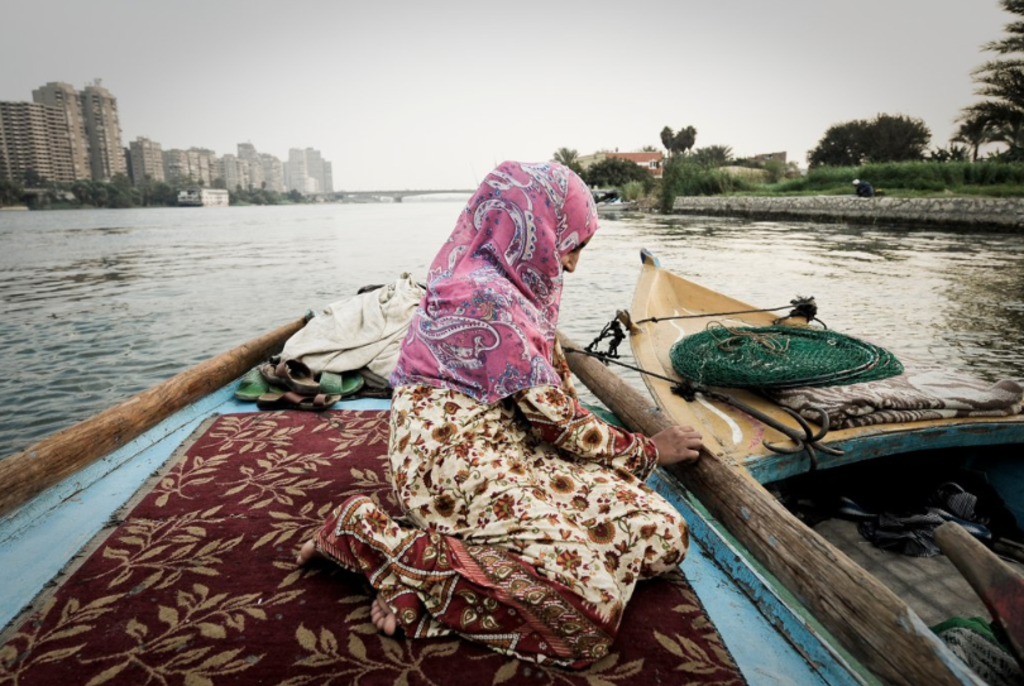
Egypt faces the possibility of severe water scarcity by 2025 for several reasons. These include the construction of the Grand Ethiopian Renaissance Dam (GERD), an expanding population and prolonged drought. Egypt’s water supply is predicted to fall below 500 m3 per person per year by 2025, a condition hydrologists refer to as ‘absolute scarcity’.
The Ministry of Water Resources and Irrigation (MWRI), the leading water management authority, has disclosed the scope of Egypt’s water management issues. According to the ministry, more than 97% of the country’s renewable water resources originate beyond its boundaries, while the rainfall rate does not exceed 1.3 BCM annually, which represents only 2.3% of Egypt’s water supply. The ministry emphasized that this is a result of the impacts of climate change, which include rising temperatures and associated increasing water use as well as an unexpected effect on rainfall rates near the sources of the Nile.[1]
The government also highlighted that there is a food shortage of more than $10 billion, which would require Egypt to import 60% of its food, and that Egypt is on the verge of absolute water scarcity, with a water deficit of nearly 21 BCM yearly. The World Bank estimates that 14.5% of Egypt’s GDP in 2020 came from agriculture, forestry and fishing, which together employ almost a quarter of the nation’s 102.3 million people.[2]
Grand Ethiopian Renaissance Dam
Most recent studies have shown that the GERD project will significantly increase pressure on Egypt’s water resources, jeopardizing those resources and endangering the Egyptian economy as a whole.[3] A recent study[4] estimated that the average total annual water budget deficit for Egypt during the GERD filling period would be around 31 BCM per year, or more than a third of Egypt’s current total water budget. This estimate took into account seepage in the fractured rocks below and around the GERD reservoir as well as the intrinsic water deficit and did not assume possible mitigation efforts by the Egyptian authorities.
Activities in the Nile Basin
Many activities and projects are currently being carried out in the Nile Basin, which may have an adverse effect on the amount of Nile water flowing into Egypt. Abdelkader, Haggag [5] reported that hydropower and irrigation development activities in the Baro-Akobo-Sobat basin, a part of the eastern Nile Basin that drains water to the White Nile, could reduce the flow arriving at Aswan by an average of 3.6 km3/yr.
Population and water demand
Recent studies revealed that the high rate of population growth is one of the most significant factors in worsening future water shortages.[6] Slowing rates of growth through practised strategies like boosting healthcare and education could assist in maintaining per capita water share, a crucial indicator of water scarcity.
Climate change
Climate change will put further pressure on water resources in Egypt. By the end of the 21st century, precipitation in the Nile Basin is expected to drop by up to 40%.[7] As a result, it is anticipated that the yearly inflow to the High Dam Lake will drop by 16%.
Inefficient water uses and network loss
The issue of water leakage from drinking water networks is an important element in the complex water file, especially given the already acute shortage of water resources. The annual review report of “Drinking Water and Sanitation Statistics organization” for 2016 revealed the crisis of wasting drinking water in all governorates of Egypt, as reached the percentage of loss water is about 29.7% at the national level of the total quantity produced, which amounts to 9.3 BCM. [8] The review report also indicated that Upper Egypt lost about a third of its production in 2016, despite the small quantities produced by the water stations in those areas.
[1] Novo, C. Egypt to invest $50 billion in drinking water by 2037. 2019; Available from: https://smartwatermagazine.com/news/smart-water-magazine/egypt-invest-50-billion-drinking-water-2037.
[2] Schneider, T. Unravelling Egypt’s water crisis. 2022; Available from: https://borgenproject.org/egypts-water-crisis/.
[3] Aziz, S.A., Zeleňáková, M., et al., 2019.Assessing the potential impacts of the Grand Ethiopian Renaissance Dam on water resources and soil salinity in the Nile Delta, Egypt. Sustainability, 11(24): 7050.
[4] Heggy, E., Sharkawy, Z., et al., 2021.Egypt’s water budget deficit and suggested mitigation policies for the Grand Ethiopian Renaissance Dam filling scenarios. Environmental Research Letters, 16: 074022.
[5] Abdelkader, A., Haggag, M., et al., 2023.Assessment of the impacts of proposed water resources development projects in Baro-Akobo-Sobat basin on Nile inflows at High Aswan Dam. Journal of Hydrology: Regional Studies, 46: 101335.
[6] Dolan, F., Lamontagne, J., et al., 2021.Evaluating the economic impact of water scarcity in a changing world. Nature communications, 12(1): 1915.
[7] Beyene, T., Lettenmaier, D.P., et al., 2010.Hydrologic impacts of climate change on the Nile River Basin: implications of the 2007 IPCC scenarios. Climatic change, 100(3-4): 433-461.
[8] Foad, a.B.H., 2019.Water consumption in Egypt “Reality and indicators”, in Almarsad Almasry. Cairo, Egypt.
